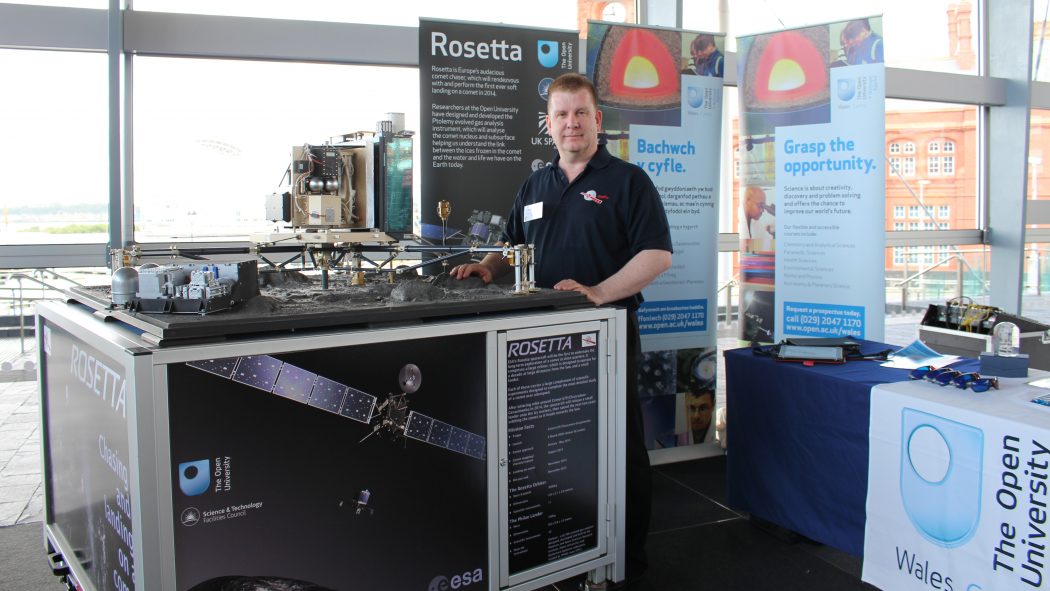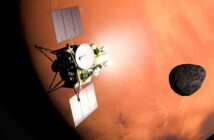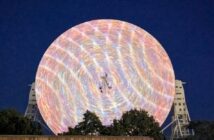Space, it’s very out there. The exploration of the stars, galaxies and moons is all very exciting but it can seem a bit removed from our everyday lives. Things are different at The Open University, where space exploration is not done in isolation.
Take the Rosetta Mission: This ground-breaking mission involved the OU creating the Ptolemy instrument for the Philae lander which momentously landed on the Comet 67P/ Churyumov-Gerasimenko in November 2014. Since then, exciting analytical findings from the instrument have been forthcoming.

Dr Geraint Morgan.
But behind the scenes the team who created this carefully crafted instrument designed to determine what the comet is made from are using their knowledge and technical know-how to develop new projects that are a million miles from space but nonetheless exciting. By collaborating with healthcare practitioners, the design philosophy which resulted in Ptolemy is now being given a fresh lease of life, which could ultimately save lives.
Early detection of prostate cancer is crucial in the fight against the disease and this is where Dr Geraint Morgan and his team in the Department of Physical Sciences hope to make a difference. They are working on two non-intrusive tests which can be used by doctors on large numbers of patients using Gas Chromatography – Mass Spectrometry (GC-MS). He was speaking about this recently at the National Assembly in Cardiff.
Geraint Morgan says:
We’re a team with a unique blend of multi-disciplinary backgrounds. Space missions have forced us to think outside the box and as a result we have collectively developed a successful approach to solving customer-led challenges. Basically, we are not scared of trying new things.
“Some academics prefer blue sky thinking, we are more concerned with the applied nature of research. Unlike most traditional university science groups, we also think commercially – so we’re always thinking of the end user and how we develop the optimised solution that can then be adopted.
“We have a proven track-record of developing sector disruptive technologies and medical diagnostics is our latest application area.”
They have used a high-end commercial GC-MS, originally purchased to analyse rocks from space (meteorites), to sniff a small numbers of urine samples with encouraging results. Now the team want to test larger numbers of “blind samples”. Dr Morgan said they are convinced their method is more accurate than the existing PSA blood test and they will be working with clinical partners to take the work forward.
“We believe it works, but it needs to be further evaluated. At this preliminary stage, we have data to show this has potential.”
What we’d really like to determine is the difference between latent and aggressive prostate cancer and along with our clinical partners we have designed a study to test if this is possible.
Explaining and depicting their research and what they can offer to clinical partners is not a simple matter, think a 30-page business plan and you’re close to what they currently have available. So a chance meeting Ross Burgeon had with The Design Council achieved a breakthrough.
The Design Council enabled the team to construct their project pictorially, making it very easy for the end user (investors, medical teams) to engage with, understand and, more importantly, to see the benefits and savings that could be made.
Vital work
Using drawings, diagrams, stats, flow charts and info graphics they were able to show much more accessibly how the research could be adopted. Flexible, visual and without bias, the newly-packaged research is now ready to share and, it’s hoped, lead to change.
Dr Morgan explained how The Design Council input helped: “Collectively the team took the work forward with a series of workshops that resulted in the Business Model Canvas and Service Model Blueprint. The latter, a simple visual roadmap of the patient pathway has been incredibly successful in engaging stakeholders at all points in the value chain.”
With prostate cancer comprising 13 per cent of all cancer cases in the UK and the second leading cause of cancer death affecting men in Britain, the work by the OU’s scientists is vital.
Treated sooner
And it doesn’t stop there, the pictorial approach gleaned from the workshops with the Design Council is being used in other ways, including a proposal for an educational portal which can help GPs and the general public correctly navigate the wealth of information and knowledge in the public domain on cancer, utilising OU pedagogy and its online learning expertise. The aim is that people present early on with symptoms and can be treated sooner, potentially improving their outcomes. A pilot study is being discussed with cancer charities but the portal will need to be financial sustainable. For that they need major funding to expand the study and to develop the long-term business case.
The sky’s not the limit for the Science space team. Dr Morgan’s big wish is that within a matter of years, PhD students and even OU undergraduate students, through the Open STEM Laboratory, could be the ones helping to make the early detections of prostate cancer.
“Now wouldn’t that be exciting,” he says



